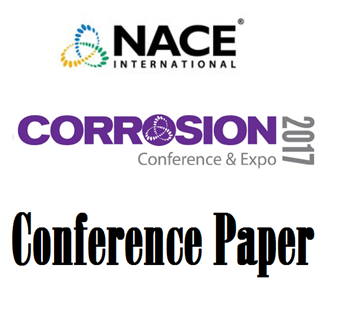Search
Individual Conference Papers
View as
Sort by
Display
per page
Modeling Corrosion of Corrosion-Resistant Alloys in Complex Environments in Wide Concentration Ranges
Product Number:
51324-20731-SG
Publication Date:
2024
$40.00
Modeling Corrosion Resistance of Reinforced Concrete Structures
Product Number:
51319-12873-SG
Publication Date:
2019
$20.00
Modeling Lead and Copper Corrosion and Solubility in Municipal Water Distribution Systems
Product Number:
51317--9104-SG
ISBN:
9104 2017 CP
Publication Date:
2017
$20.00
Modeling of Current Paths in Advanced Electrochemical Sensors for Improving Corrosion Data Interpretation
Product Number:
51319-13395-SG
Publication Date:
2019
$20.00
Modeling of Multi-Pipeline Corridor CP Potential Profile with Common Cathodic Protection System
Product Number:
51317--8910-SG
ISBN:
8910 2017 CP
Publication Date:
2017
$20.00
Modeling Stress Corrosion Cracking With Explicit 3D Grain Microstructure
Product Number:
ED22-17160-SG
Publication Date:
2022
$20.00
Modeling the Service Life of Corrosion Protection Coatings
Product Number:
51323-19068-SG
Publication Date:
2023
$20.00
Modelling Electrolytic Hydrofluoric Acid In The Fractionation Phase Change Corrosion Zone Of HF Alkylation Units
Product Number:
51322-17520-SG
Publication Date:
2022
$20.00
Modelling of Corrosion Under Insulation in Oil Sands
Product Number:
51323-19209-SG
Publication Date:
2023
$20.00
Modelling Of IGSCC With Adaptive Framework
Product Number:
ED22-17225-SG
Publication Date:
2022
$20.00
Modelling the Effects of Porous Iron Sulfide Layers on Sour Corrosion Behaviour
Product Number:
51319-13076-SG
Publication Date:
2019
$20.00
Modern Corrosion Testing: From Traditional Salt Spray Test to the Latest Innovative Methods with Advanced Environmental Controls
Product Number:
41216-962-SG
Publication Date:
2016
$20.00












